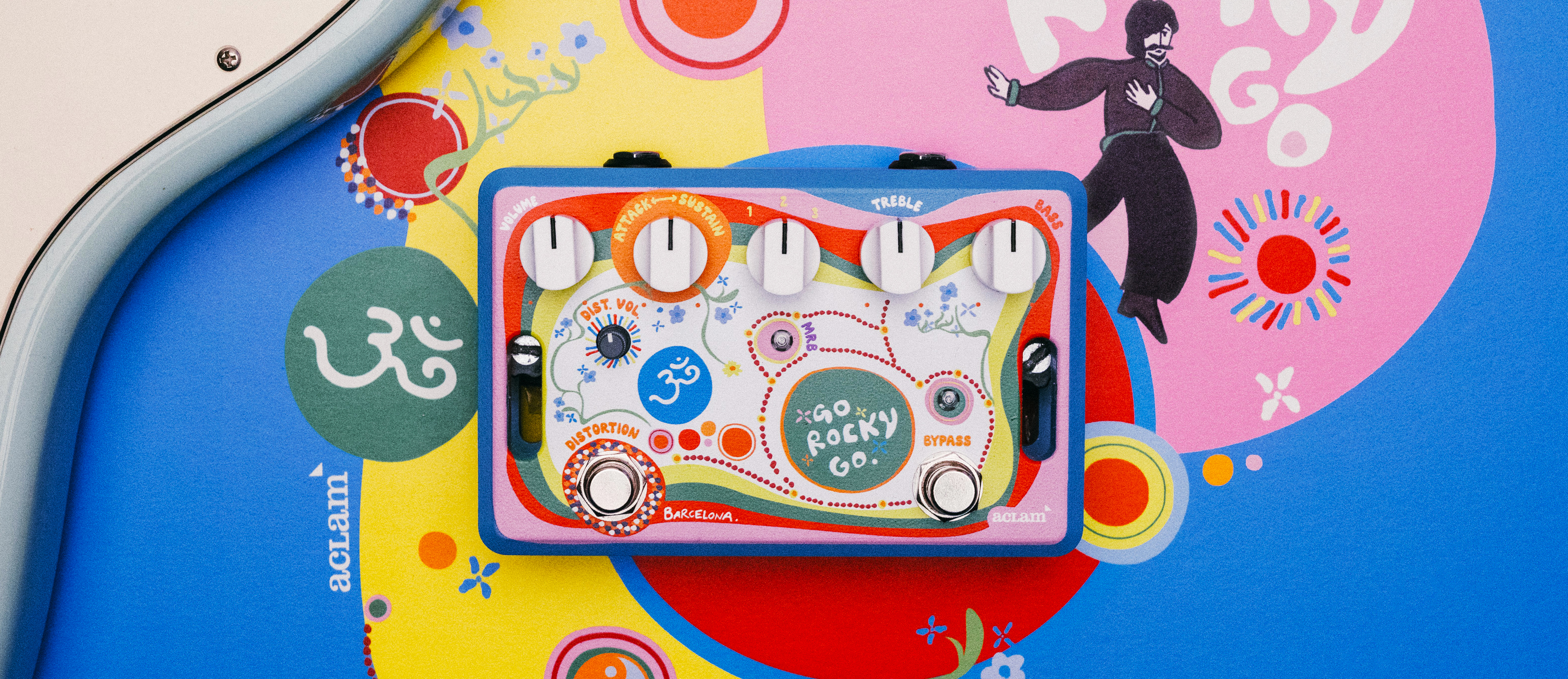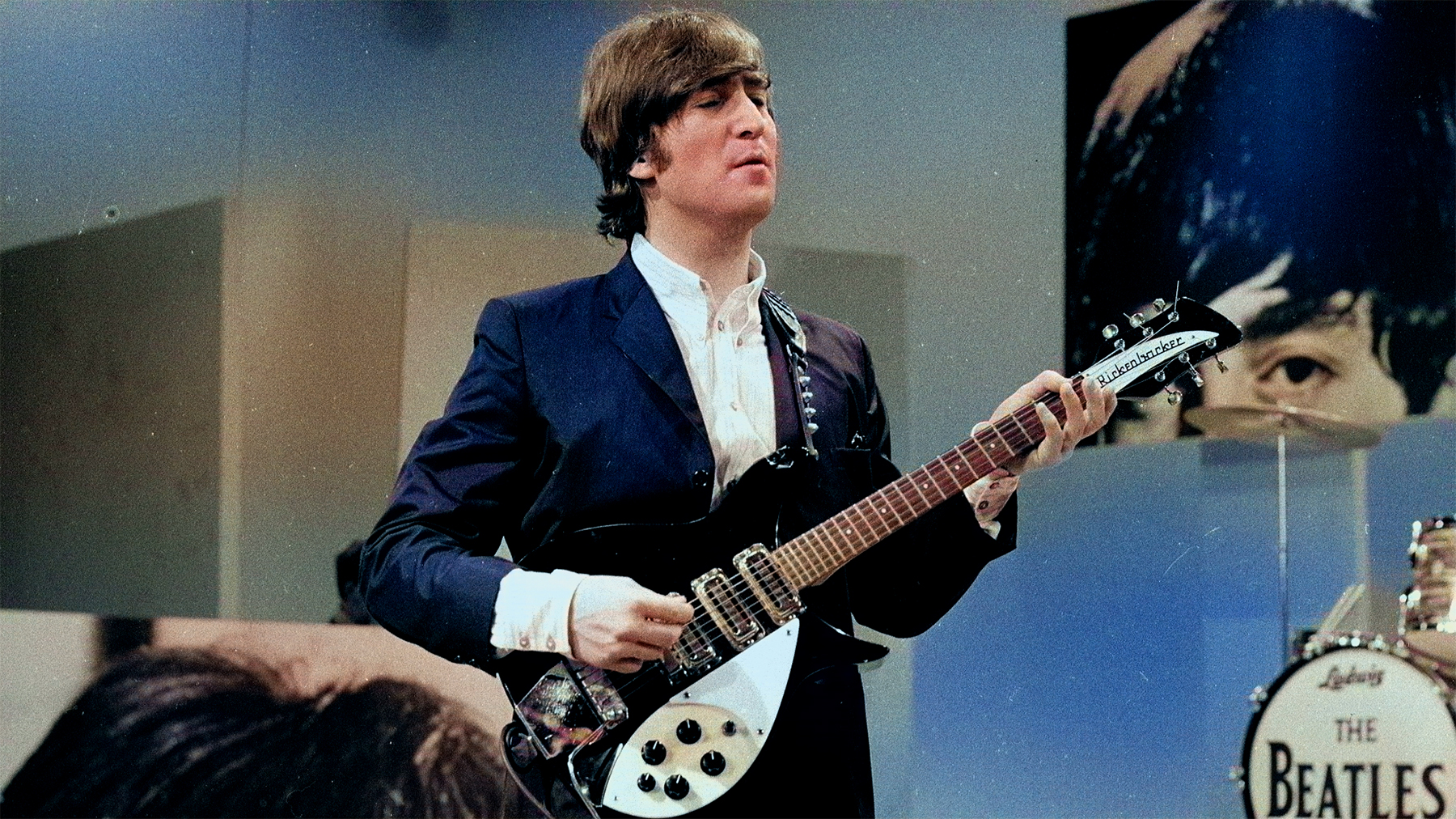GuitarPlayer Verdict
Pros
- +
A clever reworking of the Vox Conqueror preamp and its distinctive Beatle-toned distortion in pedal form
Cons
- -
Requires some working with to get the most out of it
You can trust Guitar Player.
To borrow from Monty Python’s Life of Brian, “What has solid-state ever done for us?” it gave the Beatles one of the most recognizable overdrive and distortion tones recorded in the late ’60s. Its source was the preamp in the transistor-driven Vox Conqueror amplifier of 1967 – ’69, which was used widely on Magical Mystery Tour and the White Album, thereby making all our lives a little richer.
It all comes to life in Aclam's new Go Rocky Go pedal, the company's latest Beatles gear–inspired pedal. In addition to being a respected Spanish guitar, pedal and accessory maker, Aclam numbers several Beatles obsessives among its personnel, hence the company's roster of effects pedals that include Dr. Robert, a replica of the iconic Vox UL730 amp used by the Beatles on Revolver and Sgt. Pepper's, and the Mocker, an expanded rendition of the UL730 series fuzz circuit.
The premise and execution of the Go Rocky Go pedal reads like something that could only emanate from a true passion project. The foundation of the circuit was designed as a faithful reproduction of the Brilliant Channel of Vox Conqueror serial number 2004, an amp from the same era as that used by the Beatles, which was acquired and faithfully restored by Aclam’s engineers.
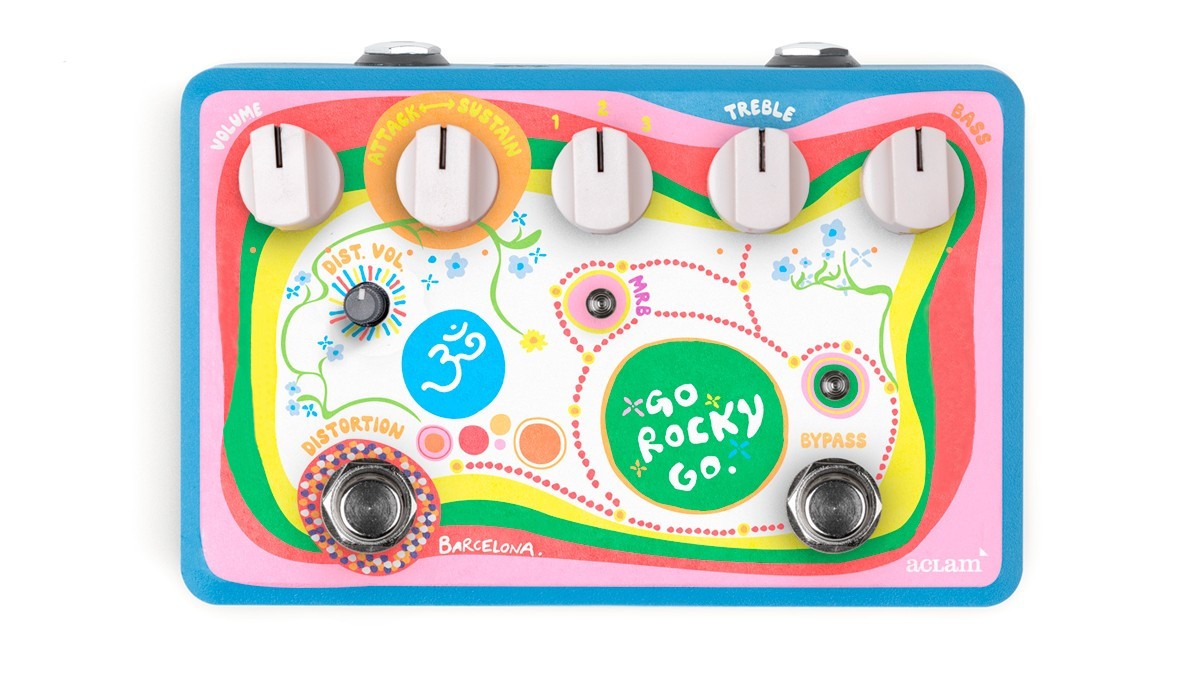
In addition to its origins as Vox’s transistorized reproduction of the company’s world-striding signature sounds, the Conqueror preamp also included built-in distortion and M.R.B. (Mid Range Boost) effects, which have been included and even refined in the Go Rocky Go circuit to deliver a little more of everything. In total, the pedal offers four modes of boost/OD/distortion: Standard, Crunch, M.R.B. and Distortion.
Controls tasked with governing all of this include volume, attack-sustain (distortion content and character), distortion volume, the three-way M.R.B. switch that selects the frequency range, treble and bass. There are two foot switches, which between them can access all four modes or bypass the pedal, according to a short or long press (1.5 seconds) applied, or a stomp of both together to switch M.R.B. on or off, and all with totally silent switching. In addition, Crunch mode has its own internal trim pot to fine tune the gain to your preference.
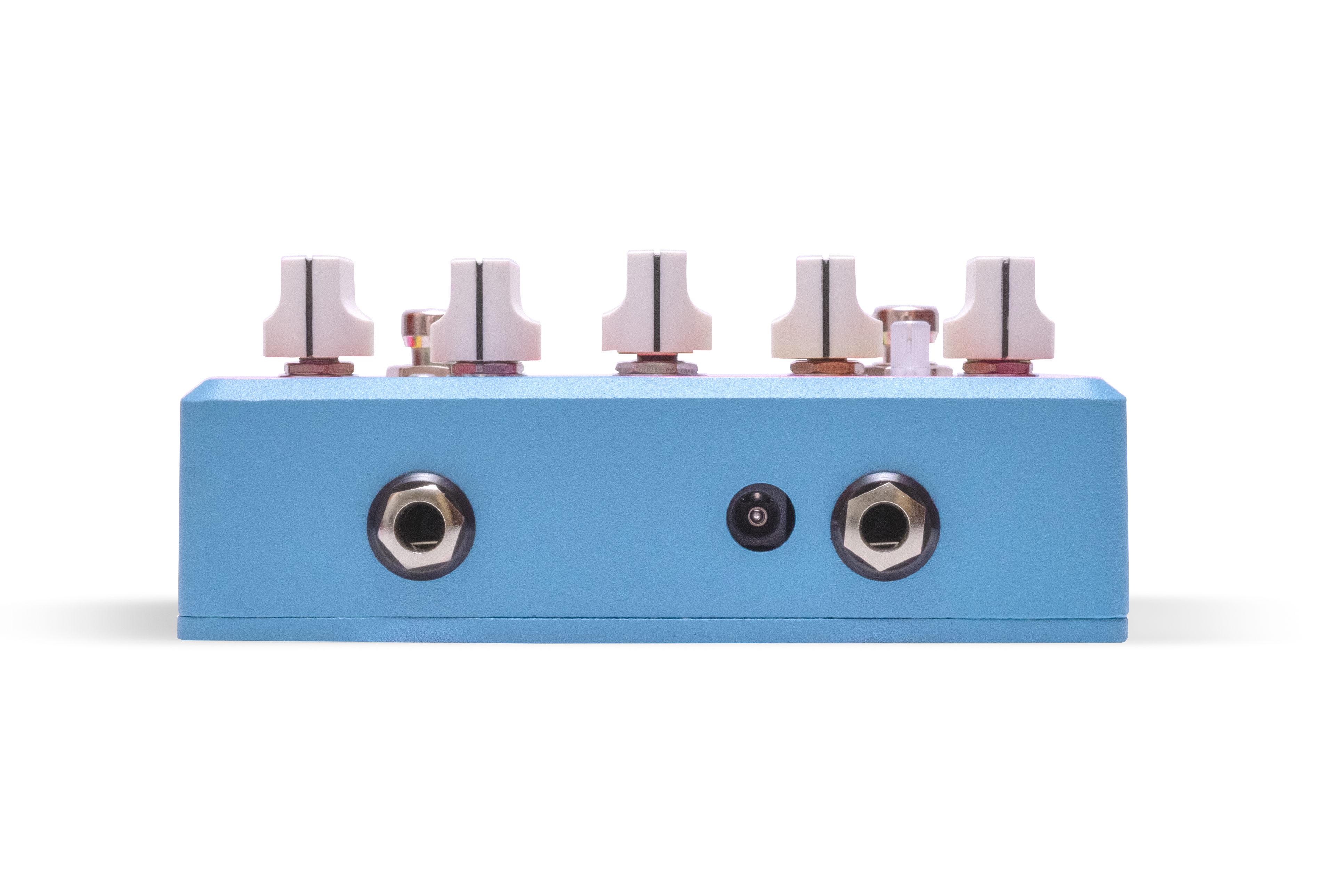
Alongside their taste for esoteric pedal designs, the folks at Aclam are known for the quality of the boxes they put them in. While the case for the first limited release is designed to work with the company's unique Smart Track pedalboard anchoring system system, future editions feature a standard enclosure, as shown in the photos here, except for those shown in the main top image.
Regardless, the sound, specs and colorful finish remain the same. This pedal is housed in a rugged die-cast construction and decorated outside with a powder-coated homage to the distinctive paint job on George Harrison’s famous Rocky Fender Stratocaster, which he applied over the guitar’s original Sonic Blue finish. The unit runs on a standard center-negative power supply (not included) that delivers anything from nine to 18 volts, achieving higher headroom and greater output volume with the latter.
All the latest guitar news, interviews, lessons, reviews, deals and more, direct to your inbox!
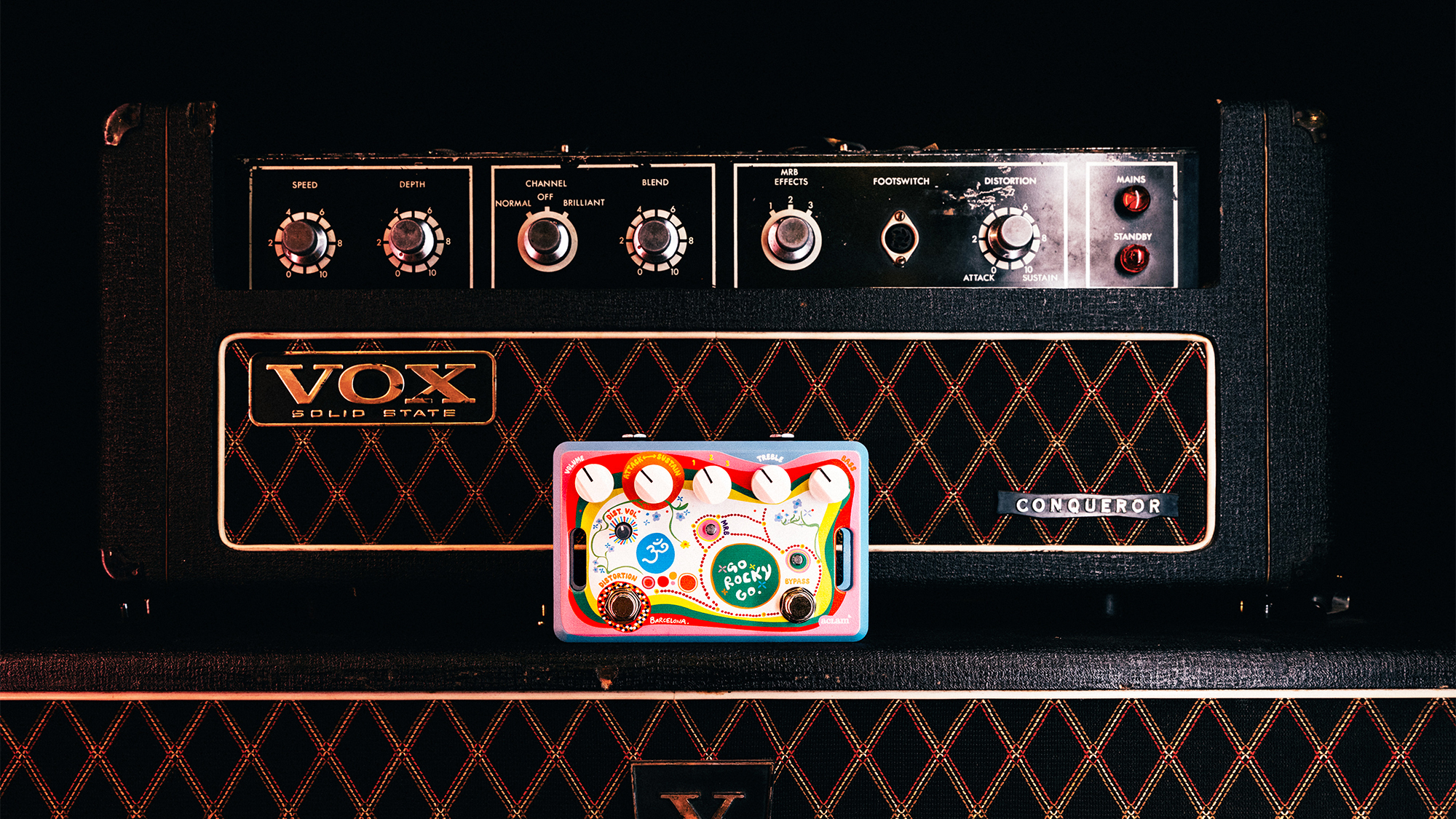
Tested with a Gibson ES-355 and a Fender Telecaster into a tweed Deluxe-style 1x12 combo and a Vox-ish 65amps London head and 2x12 cab, the Go Rocky Go quickly revealed a multifaceted sonic template as unique as its looks, and delivered a fast track to several classic tones of the late ’60s.
Guitarists are entirely familiar with the utility of solid-state effects pedals these days, yet most solid-state guitar amps — those in the traditional sense, rather than digital modelers — still get relatively little respect compared to their tube-driven contemporaries. It’s interesting, then, that this example of the former is designed to replicate some of the more compelling examples of the latter, and does it so well even when used into a contemporary tube amp, as most will likely be.
From gentle boost to mid-crunch to hairy fuzz-adjacent distortion — all EQ’d to taste — there’s a lot available in this box, and it’s understandable that it takes some playing-around to fully come to grips with it. But for a pedal that packs so much and costs a pretty penny to bring it to you, that seems fair enough, and it’s worth spending time getting to know it.
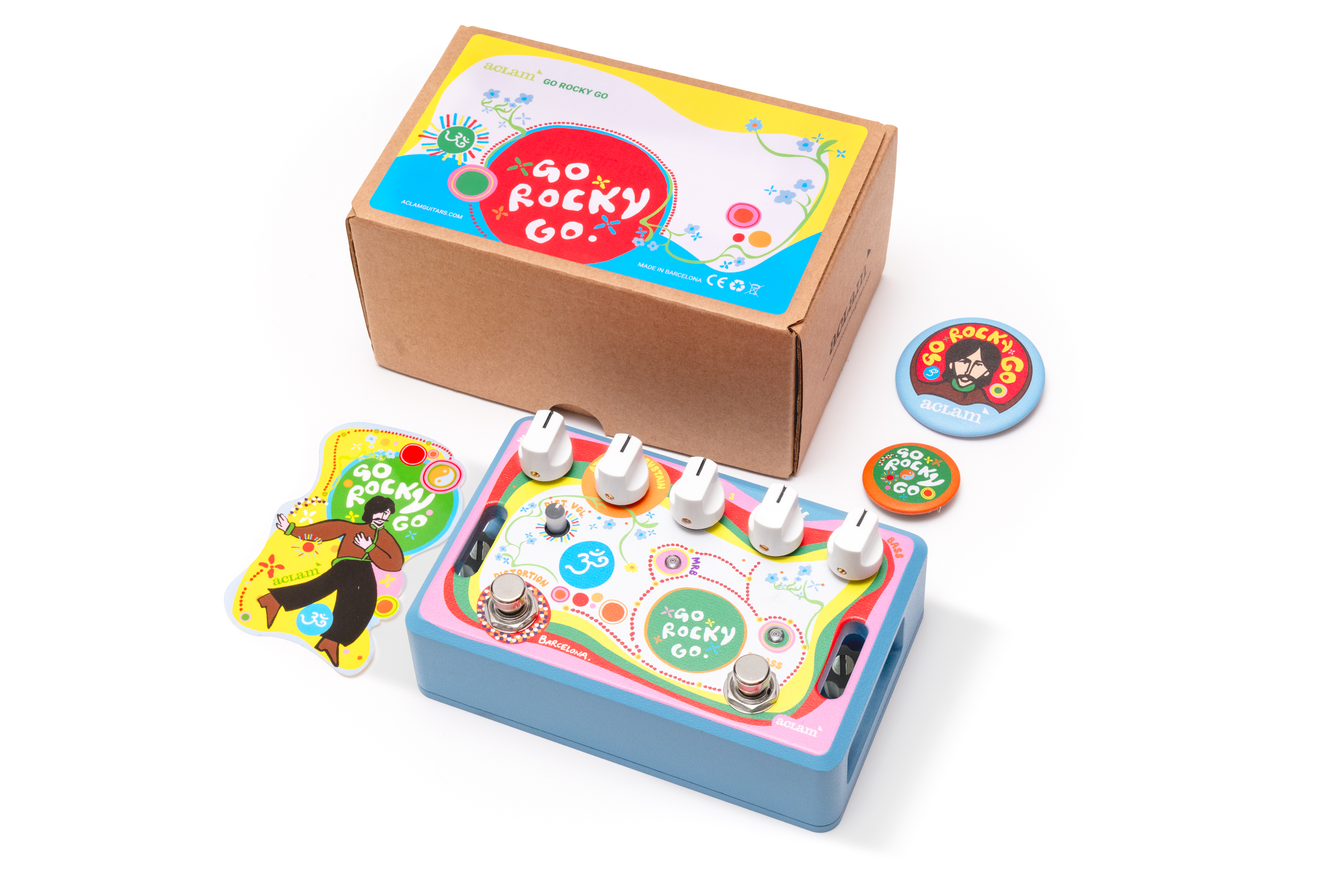
The veracity and broad range of the White Album and Magical Mystery Tour tones that revealed themselves at each twist of a knob or stomp of a switch (or two) blew me away. In the process, the pedal also revealed a plethora of inspiring gain-staging options that are well outside the familiar — which is to say, the sounds here have very little in common with the boost, overdrive, distortion and fuzz circuits that are so often replicated from one pedal to the next, ad infinitum.
The tones here run the gamut from blocky, hard-edged and bordering-on-harsh-bright to smooth and creamy, such as with distortion engaged and the attack-sustain knob well clockwise. In that respect, Go Rocky Go reminds us that the sounds that stand out in a mix aren’t always the familiar and comforting but often can be the new (or once new, in this case), different and attention grabbing.
As such, it’s also worth noting that the Go Rocky Go might not be one for the guitarist merely seeking a new shade of tube-like overdrive or the mere boosting of their own amp into clipping, as so many traditional ODs aim to do. Instead, it’s very much its own thing with a specific and focused agenda, and it achieves that very, very well. And — as a bonus — each pedal comes with a sticker depicting Harrison circa late 1967 and a pair of buttons.
In so doing, it takes us back to a time when a little English rock band decided that virtuous guitar tones didn’t all have to come from cranked Marshalls or searing Vox AC30s, and understood that an oddball of a solid-state interloper — a Vox amp marketed as the cutting edge of guitar tone and the next big thing — could generate sounds that would stand out perfectly in some of their more complex and ambitious mixes. It was cool stuff for the Beatles nearly 60 years ago, and might just be the creative nudge you need today.
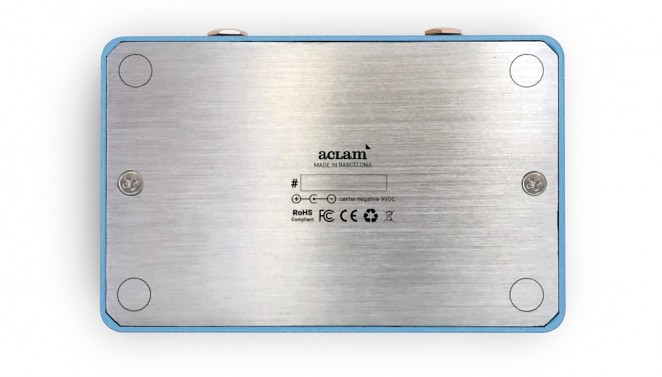
CONTACT aclamguitars.com
PRICE $349 street
CONTROLS Volume, distortion volume, attack-sustain, 1-2-3 (Mid Range Boost), treble and bass. Internal trim pot for Crunch mode gain
EXTRAS Input and output, silent switching, LED indicator for each function, center-negative 9V-18V DC adaptor input
SIZE 5.4" x 3.4" x 2.2" (L x D x H)
ORIGIN Assembled in Spain
Dave Hunter is a writer and consulting editor for Guitar Player magazine. His prolific output as author includes Fender 75 Years, The Guitar Amp Handbook, The British Amp Invasion, Ultimate Star Guitars, Guitar Effects Pedals, The Guitar Pickup Handbook, The Fender Telecaster and several other titles. Hunter is a former editor of The Guitar Magazine (UK), and a contributor to Vintage Guitar, Premier Guitar, The Connoisseur and other publications. A contributing essayist to the United States Library of Congress National Recording Preservation Board’s Permanent Archive, he lives in Kittery, ME, with his wife and their two children and fronts the bands A Different Engine and The Stereo Field.
